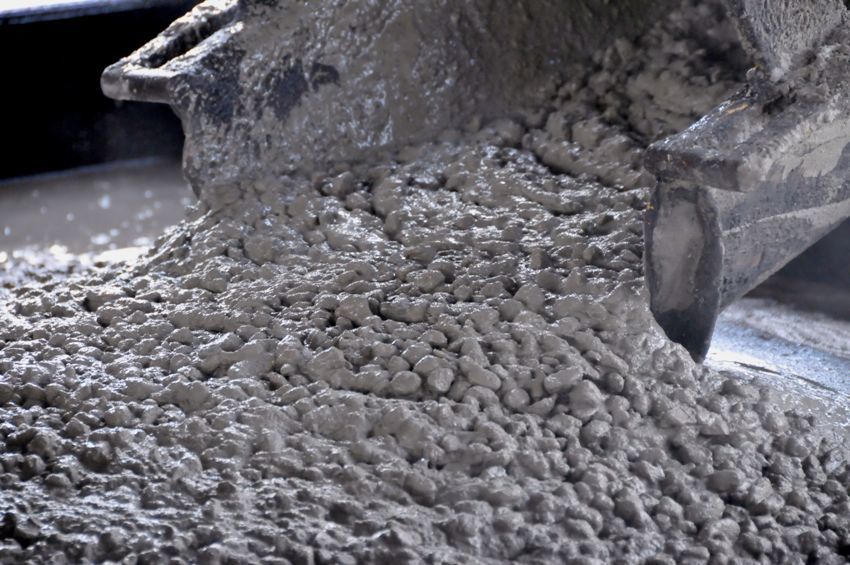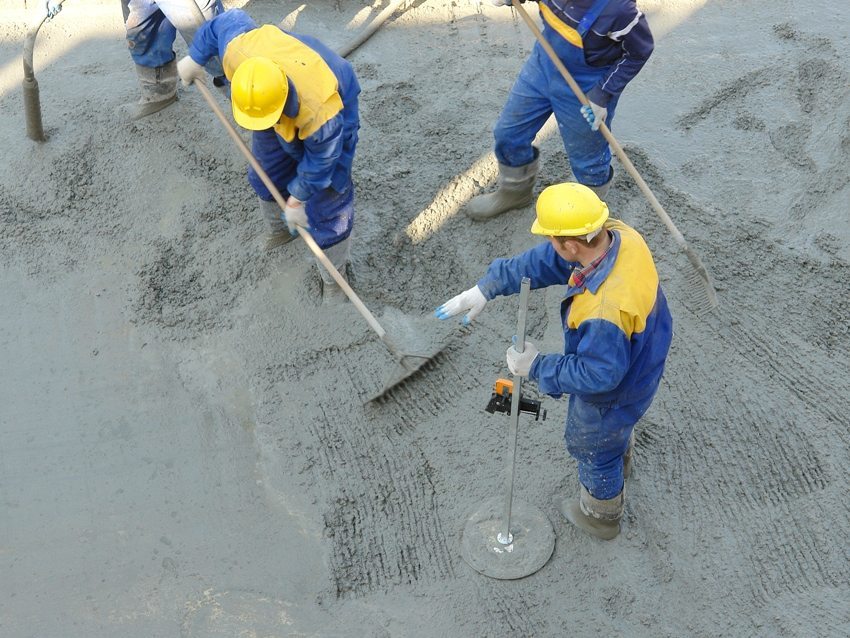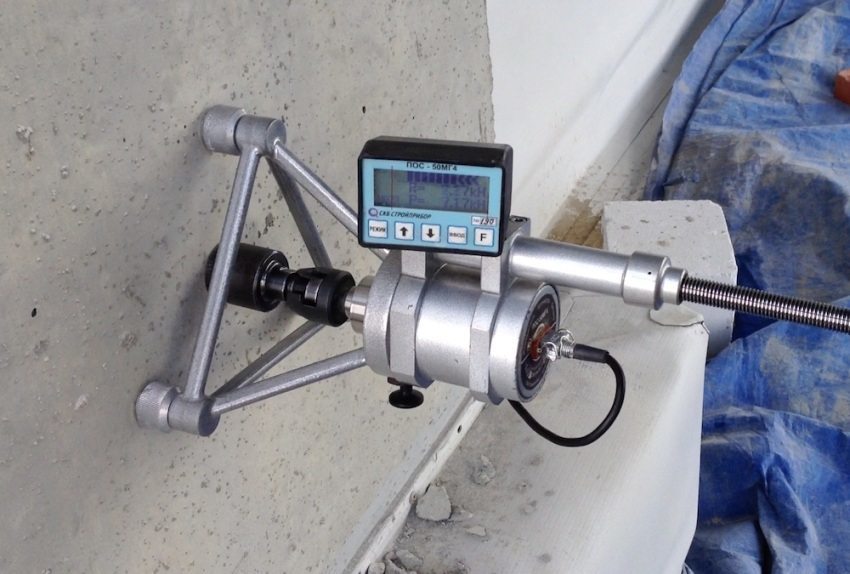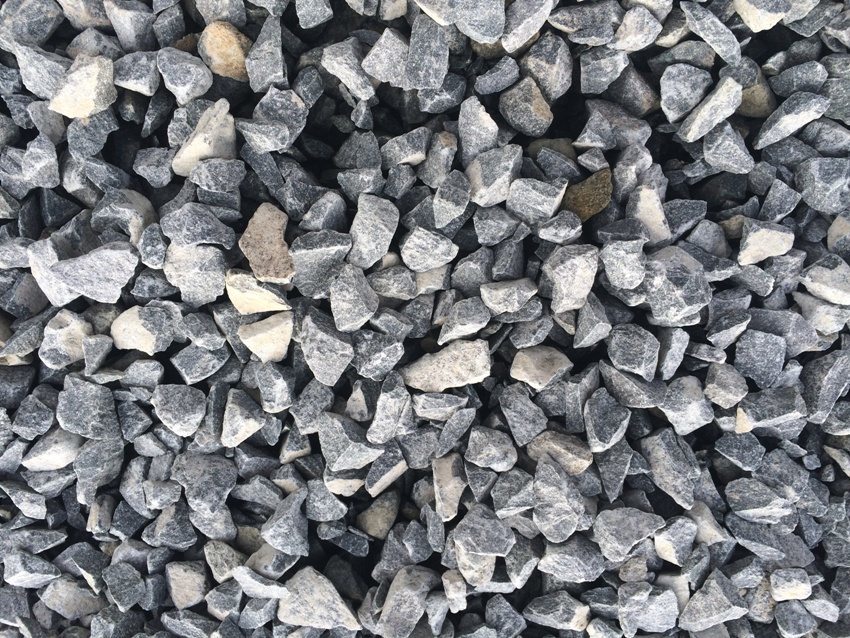
Depending on the purpose, can be used various proportions of concrete preparation
Content
-
1 Technical characteristics of concrete
- 1.1 Conformity marks implementation of concrete
- 1.2 Main components of the concrete mix
- 1.3 Consumption of materials. Table "concrete Proportions on 1m3"
- 1.4 Proportions of concrete for the foundation
- 2 The procedure for preparation of the solution
Technical characteristics of concrete
Cement and water are part of the concrete form when mixed mass which hardens turns into cement stone. In this form the material is easily deformed, it forms a plurality of microcracks, which leads to significant shrinkage.
Addition of the cement mixture of fillers (gravel, sand, gravel, etc.) Promotes the formation of a kind of valves which assumes the internal stress. Because of this improved strength values, weakens mobility mixture and deformation of shrinkage.

Various fillers give concrete its strength and increase specifications
Given the degree of strength of the concrete, the material is divided into classes (denoted "B") and marks (denoted "M"). The higher the grades of concrete numeric values (e.g., M200, M300 or M400), the stronger is the material. The class and the brand depends on what kinds of designs to be used.
If the construction of your object is supported by the project, then it is already predetermined by the grade of concrete required for the foundation of a device or other designs.
Table parameters of concrete strength:
| grade of concrete | M75 | M100 | M150 | M200 | M250 | M300 | M350 | M400 |
| Load (normative) kgf / cm2 | 65 | 98 | 131 | 196 | 262 | 294 | 327 | 393 |
Conformity marks implementation of concrete
Concrete mixtures with different marks are used for different types of structures.
The table below shows the scope of the possible use of concrete depending on the brand:
| Mark M100-M150 |
Mark M200-M250 |
Mark M300 |
Mark M350 |
Mark M400 |
| The base (substrate) under the screed, foundation, tile or concrete track. | foundations single-storey buildings, Covering, blind area, playgrounds, stairs. | Strip foundation, solid walls, screed, blind area, platforms, ladders. |
Casting w / concrete structures (Beams, support columns, beams, bridges, floor slabs, pools). |
Hydro (dams, bridges), fortification facilities (bunkers, storage). |
Flow rate and proportions of concrete main ingredients depends upon many factors. As for sand, it is necessary to take into account its moisture content, particle size, impurity content. For gravel and the gravel has a value of humidity indicators contamination emptiness nonstandard inclusions (garbage).
For cement based on its brand. Also taken into account type of work for which the finished concrete solution: concrete screed, pouring the foundation, erection of walls and others.
The main component of concrete mortar - cement. the flow ratio of this material expresses concrete brand. Mark concrete above, the more its composition of cement.

To prepare the various uses of cement concrete mix
Traditionally concreting is carried out in the period when the air temperature is above zero. This contributes to quality solidified solution.
Useful advice!It is not recommended to perform concrete works at low temperatures, in view of a possible probability of producing poor material strength.
Working with concrete during the cold season there is a possibility that the water in the composition of the solution frozen, and become a source of destruction inside the material. Thus, the drop strength.
Grasp the concrete takes place in a period of 12 hours, two weeks concrete accumulates 80% strength. Operation of the finished design is made possible in a month.

Testing of the finished concrete structure to shearing using a special instrument
Main components of the concrete mix
Acquiring component ingredients to prepare a solution, make sure (as possible) in their capacity as:
- water: fresh water is used;
- sand: must not contain in their composition the clay, you can visually check the color. If sand yellow saturated color - hence the clay content in it is great. For a solution used white or gray sand;
- cement: the touch bags of cement should not have solidified part and the material must be made no earlier than four months from the date of acquisition;
Useful advice!Purchasing cement, pay attention to the markings. Only from trusted manufacturers markings on the bag matches the quality of the cement contained therein.

To prepare the mixture using clean chippings, without dirt and impurities
Consumption of materials. Table "concrete Proportions on 1m3"
The expenditure for the preparation of components 1m3 concrete depends on the purpose of construction and cement the brand involved in the production. To do this, the values summarized composition proportions 1m3 concrete.
Below are two tables on the concrete proportions 1m3.
Table №1 - concrete proportions for brand M100, M200, M400 and M400:

Concrete Stamps: M100, M200, M300, M400
Table №2 - concrete proportions for brand M150, M250, M350 and M450:

Concrete Stamps: M150 - M450
Thus, if you need to produce concrete M200, the proportions will be on
1 m³ of solution - 1 / 3.5 / 2.6 (kg), for concrete M300, amount proportions - 1 / 2.4 / 4.3 (kg), the proportion of concrete M400 - 1 / 1.6 / 3.2 (kg).
For example, we can calculate the quantitative composition of the components, the proportions accounted for cooking table M400 M500 concrete using the cement. Take 20 buckets of cement. Sand proportions would be (20 x 1.6) = 32 buckets. Crushed respectively - (20 x 3.2) = 64 buckets. And water - (20 x 0.5) = 10 buckets. Knowing the density of all the components can easily translate the required number of buckets in those units, which is a realization of materials. Thus, the bucket capacity of 10 liters, filled with cement, will weigh 12 kg (10 x 1200) where 1200 kg / m³ - cement density at sprinkling, bucket sand - 14 kg (10 x 1400) where 1400 kg / m³ - the density of the sand, the same volume of gravel will weigh 15 kg, given its density.

Fill strip foundation with concrete mix
Proportions of concrete for the foundation
If the concrete works are manufactured in small volumes, for example, private construction of single or small works, it is advisable to stick to the concrete proportions in buckets. Such quantitative measures are used if there is no way to arrange the construction site of a special technique, and when the solution is poured in small portions.
In the production of concrete for the foundation structure must adhere to the following proportions of the concrete to the foundation below.
Table proportions of concrete on the foundation in buckets for brands M100, M200, M300 and M400:

When using the cement marks 400 and 500 in volume 10 liters
The procedure for preparation of the solution
In terms of the individual building concrete foundation solution prepared by measuring out of the bucket components. Note that a bucket and a shovel cement must be extremely dry. For more accurate proportions, the composition of sand and gravel in the bucket slightly compacted and dub on the edge of the bucket. Measured gravel and sand mixed well in a comfortable wide container, forming grooves, which pour cement prepared. All ingredients (the number of which is chosen from the proportions of the table) is stirred to obtain fairly uniform in color mass.
Related article:
What is the weight of concrete cube? Main characteristics and composition. Determination of weight. Variations in concrete depending on the material. Types of concrete (light and heavy). What affects the weight of the concrete?
The resulting mass is formed by a cone in the middle of the recess satisfied, and where the water is poured. Gradually pour the mixture from the edges to the middle, until the water is completely absorbed. Once the first portion impregnated with water, the procedure is repeated with water until a desired consistency concrete mix.

Preparation of cement slurry by mixing with your hands
Useful advice!Do not disturb the water-cement ratio is recommended, trying to obtain a liquid solution. Excess water will leave voids in the concrete resulting in reduced strength.
Adhering table proportions of concrete preparation, the composition can be prepared from homogeneous plastic mixture. This will guarantee the strength and durability of concrete in service.
Implementation of technical standards in the preparation of concrete mixtures contributes to the preservation of the basic indicators needed for construction.


